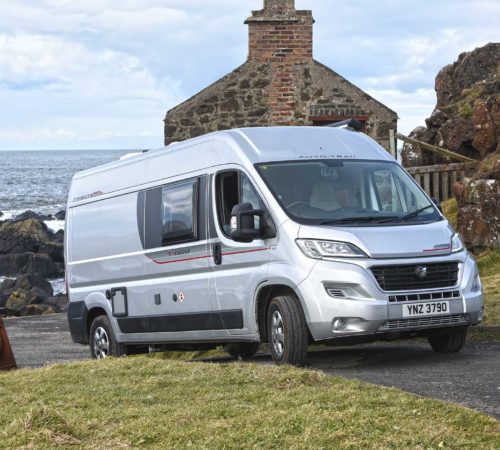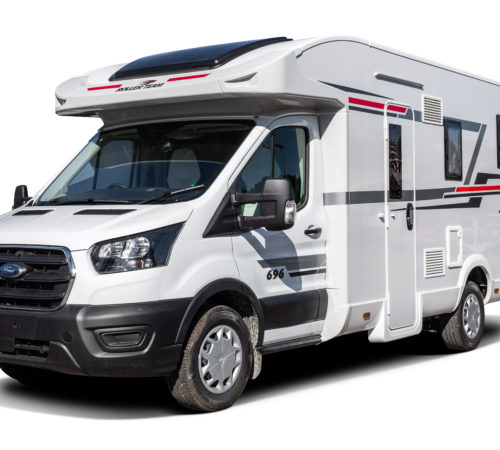The Wild Atlantic Way and Causeway Coast Route
The Wild Atlantic Way is a journey of epic proportions. Featuring some of the most dramatic coastal views anywhere in the world, it’s a road trip that skirts great swathes of golden sand, lush emerald peninsulas, rocky islands, brooding mountain peaks, and rugged cliffs – all with the scent of salty fresh air in your nostrils. This is an odyssey where you leave behind the rat race and let your heart beat to an altogether different rhythm.
The Wild Atlantic Way and Causeway Coast Route (Dublin Via Belfast back to Dublin)
The Wild Atlantic Way (Dublin to Dublin)
[PART ONE]
The Wild Atlantic Way is a journey of epic proportions. Featuring some of the most dramatic coastal views anywhere in the world, it’s a road trip that skirts great swathes of golden sand, lush emerald peninsulas, rocky islands, brooding mountain peaks, and rugged cliffs – all with the scent of salty fresh air in your nostrils. This is an odyssey where you leave behind the rat race and let your heart beat to an altogether different rhythm.
The Wild Atlantic Way is the world’s longest defined tourist trail, covering 1600 miles from Kinsale in Cork to the Inishowen Peninsula. Part One of Causeway Campers’ Really Good Road Trips Wild Atlantic Way concentrates on the western and northern leg of this remarkable trek.
Leave Dublin’s Fair City in your rear view mirror and head along the M4 and M6 though Athlone towards Galway.As you reach Athenrydetour south along the R348/R347 to our starting point at the majestic and magnificent Cliffs of Moherin County Clare. Located at the south western edge of the Burren region, these straight, soaring cliffs rise defiantly more than 700 feet from the Atlantic Ocean below and are, not surprisingly, one of Ireland’s most popular tourist attractions. Next stop is the city of Galway on the River Corrib with its bohemian vibe and relaxed atmosphere. From Galway you can catch a ferry to the Aran Islands, sitting at the mouth of Galway Bay. Consisting of three islands, the 1200 mainly Gaelic speaking inhabitants (don’t worry they are fluent in English too) will welcome you with open arms. Back on the mainland it’s time to hug the coastline once more as you steer a path towards Clifden. The unofficial ‘capital of Connemara’ on the Owenglin River, it’s a popular starting point for tourists looking to experience the rugged, unspoilt beauty of Ireland’s west. Just three miles from the town is Derrigimlagh Bog, a mysterious mosaic of tiny lakes and peat bogs crossed by a solitary narrow road. It’s an area that also provided a soft landing for Messrs Alcock and Brown when they crashed in 1919 after the world’s first nonstop flight across the Atlantic. Continue on to Killary Harbour where you can catch a glimpse of the dolphins who chase migrating salmon during spring/summer, or treat your taste buds to the local shellfish delicacy, said to be the best mussels in Ireland. You will have long since waved goodbye to the stresses and strains of modern life as you stop off in Westport and Clew Bay, overlooked by Croagh Patrick and the Nephin Mountains. North of Westport is Newport and Mulranny, gateway to Achill Island. Attached to the mainland by the Michael Davitt Bridge, Achill is the largest island off the coast of Ireland and was once famous for its shark fishermen.
As you immerse yourself in the relaxing tranquillity of Ireland’s western seaboard the visual delights just keep on coming. The Mullet Peninsula, a large promontory connected to the mainland at Belmullet; The Ceide Fields, the most extensive Neolithic site in Ireland and the world’s oldest ‘field’ system; and on to Downpatrick Head in north Mayo, a headland steeped in myth and legend. From Ballina it’s next stop Sligo, Yeats country and Mullaghmore Head, the skyline dominated by the monolithic shape of Ben Bulben Mountain(and a premier surfing location where in 2011 Ireland hosted its first Big Wave Surf event with competitors from all over the world tested their skills on the huge Atlantic rollers). Continuing north the Slieve League Cliffs provide superb views of the Sligo Mountains and Donegal Bay. Although not as famous as The Cliffs of Moher, the Leagues are actually three times higher.
The peninsula of Fanad and Inishowen further illustrate Donegal’s delights. Fanad Head is an exposed headland with an iconic lighthouse and countless golden strands (includingBallymastocker, once voted the second most beautiful beach in the world).Fanad Head Lighthouse was built in the 1800s following the tragic sinking of the HMA Saldanha (only the Captain’s parrot survived). At the tip of Inishowen is Malin Head, Ireland’s most northernly point. North of the village of Malin is Banba’s Crown (named after the mythical queen of Ireland), the point where families waved goodbye to loved ones as they set sail for a new life in America in the wake of the Great Famine.
Inishowen may bring the curtain down on The Wild Atlantic Way, but the adventure is far from over. It is at this point that The Wild Atlantic Way gives way to The Causeway Coastal Route. As you cross from The Republic of Ireland into Northern Ireland there are no border posts or passport controls to negotiate, in fact it’s only the road signs (changing from km to miles) that will let you knowyou’ve traversed into another country. What doesn’t change is sublime scenery, endless natural and manmade attractions, and the warmth of welcome that’s assured. Continue hugging the coastline and revel in the wonders of Bienvenagh Mountain, Mussendun Temple, Dunluce Castle, the UNESCO World Heritage site Giant’s Causeway, Carrick-a-Rede Rope Bridge, and the glorious Glens of Antrim. The final leg of your journey takes you through Belfast (Northern Ireland’s capital city), along the A1 and M1 back to Dublin.
[Recommended time for this road trip at least one week]



